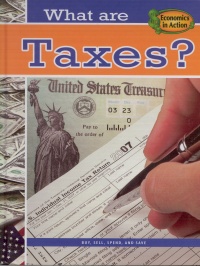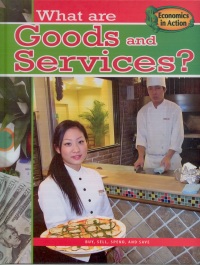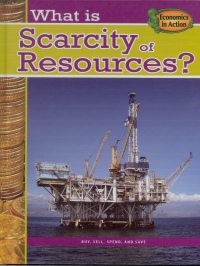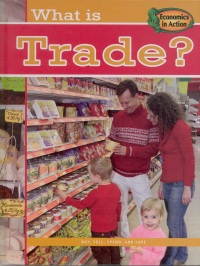| ________________
CM . . .
. Volume XVI Number 36. . . .May 21, 2010
excerpt:
These four books are part of the “Economics in Action” series and are designed to explain complex economic issues to younger children. In a world where the only guarantee is change, children need to develop an understanding of family finances and how the goods and services they use are paid for. Although other books in this series received 3 stars and a recommendation, these four books are not as carefully researched or written. They can be useful, with teacher guidance, where real-life issues are discussed and model situations are created so that children can understand the difficulties involved in making decisions within a family and in society. Teachers should note that, although Crabtree is a Canadian company centred in St. Catharine’s, ON, its principal target market is the United States. As a result, the content of these books is directed to American children, with the occasional unimportant mention of Canada. And either because they are skewed to the U.S. sensibility or because of Crabtree’s own political bent, some of the content could be challenged. For example: in What is Trade?, the topic, How Nations Choose Trading Partners, is described this way:
A more complete explanation of the issue is that the U.S. put an embargo on trade with Cuba because it couldn’t overthrow the Cuban government by force (remember the Bay of Pigs invasion in 1961?) after the Cuban people threw out the U.S. installed dictator. Since that time, the U.S. has tried to squeeze the Cuban economy and bring it to its knees by depriving the country of consumer goods, medicines, etc., and by making any country that trades with Cuba libel in U.S. courts (remember the Helms-Burton Law?). While Cuba may not be a perfect society, the U.S. trades with many nations around the world that are repressive and corrupt, but they do support U.S. policy. If complicated financial issues can be explained to children, so can history. The topics are explained in language suitable to children in Grades 3-6, with the assistance of a glossary to define bolded words. The decision to ‘bold’ a word is inconsistent, however. Some words are bolded and then explained within the passage, and some words could simply be defined within the passage. Some imprecision in writing also reduces the teaching value of the concept. For example, the word ‘thing’ is used when the term ‘goods’ or ‘items’ would conjure up an image of specifics rather than generalities. Many countries specialize in things that they exchange with other countries. If a country specializes, it produces large amounts of a few items. They then buy the other things that they need from the trading partners, or countries they trade with. This and other entries reflect an attempt to use language children will understand easily. But using colloquial language in print in a nonfiction book is much different than using it in fiction. In What is Scarcity of Resources?, the effects of demand are described:
What is ‘the extra’? Readers expect up-to-date information in a book with a current copyright date. But in What are Taxes?, it says that the “The government…passed the ‘No child Left Behind’ Act in 2001. It promotes improving children’s reading skills as well as the overall performance of all school in the U.S.” However, the Obama administration, which was elected in 2008, is proposing radical changes to the bill, including dropping strict yearly progress goals. For these and other reasons teachers who purchase this series should be cautious in their use. These books do contain interesting historical information on money and taxation (found in What is Trade? and What are Taxes?), represent typical family situations well and accurately make intelligible the concepts of each title. Recommended with reservations. Harriet Zaidman is a teacher-librarian in Winnipeg, MB.
To comment
on this title or this review, send mail to cm@umanitoba.ca.
Copyright © the Manitoba Library Association. Reproduction for personal
use is permitted only if this copyright notice is maintained. Any
other reproduction is prohibited without permission.
NEXT REVIEW |
TABLE OF CONTENTS FOR THIS ISSUE
- May 21, 2010.
AUTHORS |
TITLES |
MEDIA REVIEWS |
PROFILES |
BACK ISSUES |
SEARCH |
CMARCHIVE |
HOME |



